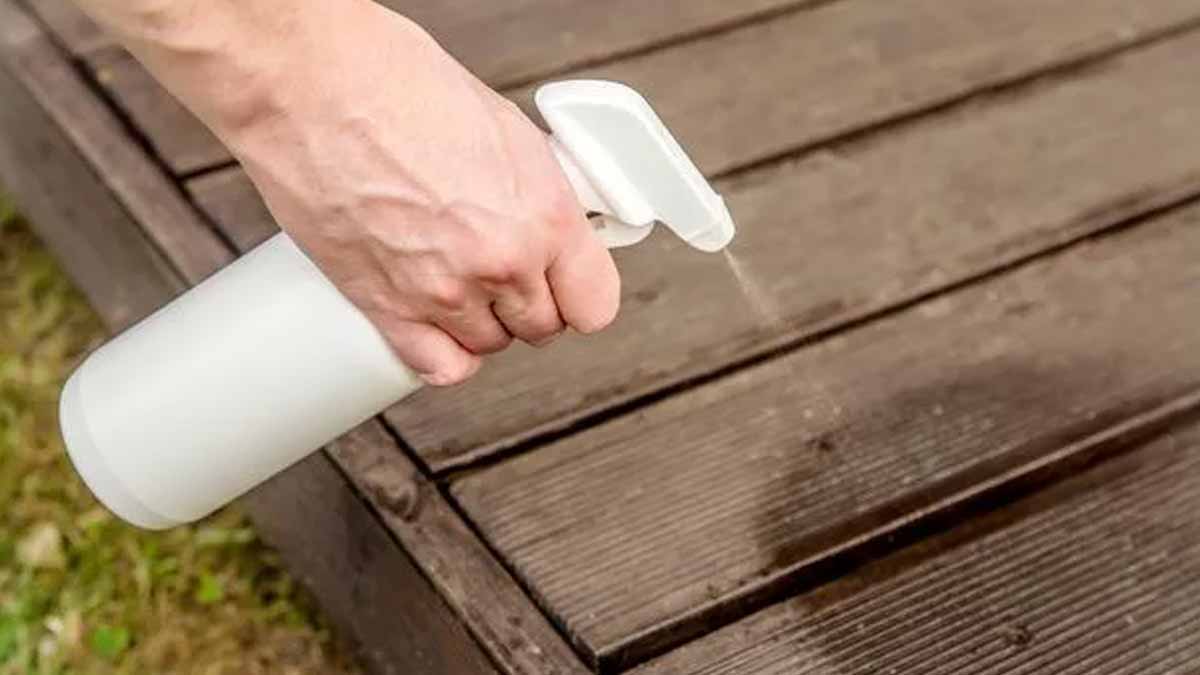One pantry staple quietly solves a messy outdoor problem, and it costs almost nothing. Used all year in the kitchen, vinegar also changes how your porch feels, because it helps you reset the space. You keep routine simple, you keep surfaces safe, and you keep time on your side each day. Stick to a light spray and smart passes, and your seating area feels calmer without heavy products or fussy steps.
Why Porches and Patios Attract Spiders
Your outdoor living space offers shelter that keeps webs safe from wind and rain. Light near the door pulls in moths and other insects, so supper arrives in steady flows. With food close and corners protected, the setting suits arachnids, which settle, build, and return because the location keeps working.
Porch traffic stays regular, so webs reappear even after sweeping outside. Many reach for harsh insecticides, yet those formulas carry strong odors and residues that linger on railings and chairs. You want comfort near snacks and drinks. A less toxic routine feels easier to use every day for most homes.
That is why a pantry essential makes sense outdoors. The acetic acid that powers cleaning, deodorizing, and descaling also helps you manage visitors you do not want. Using vinegar gives a non-toxic alternative to harsher sprays. Fabrics stay protected, you sit down quickly, and control stays easy right on the porch.
How vinegar Sends Spiders Away
Spiders navigate with finely tuned senses, so strong smells interrupt how they map safe ground. A fresh spray creates a zone they skip, and webs shift to quieter spots. The signal stays simple and immediate, so you redirect traffic gently. Doors, chairs, and railings stay more comfortable for people outdoors.
On treated surfaces the sharp aroma sets a boundary that spiders read fast. They skirt the edges, then choose new anchor points, since the signal says conditions will not favor them. You see fewer threads near lights and handles, because the smell reaches them before a web finishes and anchors fully.
If contact happens, acetic acidity interferes with how they sense the surface, and sometimes it dehydrates small bodies fatally. You still rely on light handling, because your goal is gentle redirection, not residue. A modest mist of vinegar encourages distance, while you avoid the heavy footprint many chemical options leave.
Mix Right and Target Spots
Grab a clean spray bottle, white distilled vinegar, and cool water. Fill the bottle halfway with the pantry liquid, then add the same amount of water for a simple one-to-one mix. Cap it, then give a gentle shake, so the blend stays even and ready for short, quick sessions outside.
Focus on places you see movement, because precision brings faster change. Mist along doors and window frames, since those entry points serve as predictable lanes. A light pass reduces new webs and helps prevent an indoor detour. That protects curtains and ceiling corners while it spares you from constant sweeping inside.
Treat dark corners next, focusing carefully on the high junctions where railings meet posts. Spray the corners of the porch where the breeze stalls, because threads cling there easily and fast. Slide chairs or a table aside, then mist under outdoor furniture, so undersides stop feeling safe for sticky silk.
Reapply, dilute, protect with vinegar
Never use full-strength vinegar, because high acetic content can scar finishes and fade textiles. Dilution protects cushions, rails, and planters, while the effect on spiders still holds. You keep routine safe for kids and pets, since the mix avoids harsh solvents. You also avoid streaks that make tables look dull.
The scent dissipates quickly outdoors, so plan on refreshes to keep the boundary clear. A light daily pass maintains the signal, since sunlight and airflow thin the aroma. Short sessions fit each morning coffee or evening wind-down. The habit prevents surprise webs while it keeps seats, handles, and steps welcoming.
Use a fine mist so droplets land evenly, because drenching can stress living leaves and wooden fibers. Keep sprays away from open blossoms and tender seedlings, which bruise easily. Wipe puddles from glass and metal, then let the rest air-dry. That way surfaces stay intact and scent continues doing quiet work.
Need More Than One Gentle Step
Some porches face heavy pressure, so smell alone may not hold. If activity barely slows, widen your approach without reaching for harsh sprays. Keep the routine steady for a few days, then evaluate calmly. Consistency shows whether the boundary works or whether you need support from a second gentle step.
Plenty of natural remedies help prevent a takeover, and they pair well with light maintenance. You can grow plants that keep spiders away, since foliage shapes airflow and changes where insects rest. Choose placements that best frame seating, because a living border shifts how corners feel and trims attachment points.
Options stay varied, so you start with vinegar as a first-line habit, then add plants if needed. The blend keeps control friendly to families and pets, while it respects cushions and paint. You reclaim evenings on the porch, since daily steps restore calm, and the space holds its easy rhythm.
A daily routine that keeps outdoor corners calm
Small, steady steps change how your porch feels, and they cost little. A quick shake, a light mist, and a walk along the edges bring order fast. The scent fades, so you refresh daily, then enjoy seats and railings without sticky threads. Keep harsh cans on the shelf; vinegar gives you control, while the mix protects materials and keeps evenings easy. Pair that rhythm with a tidy layout, and the space welcomes guests, not webs.
